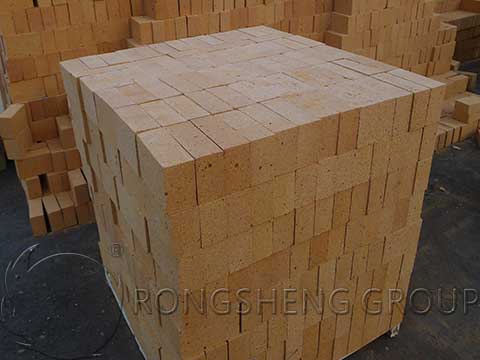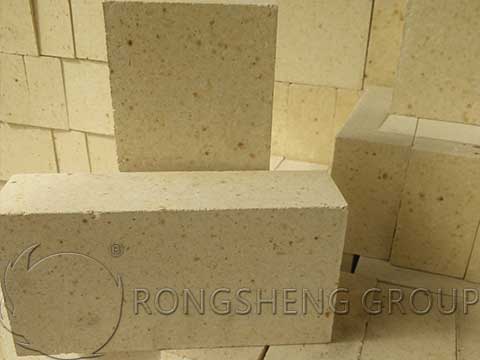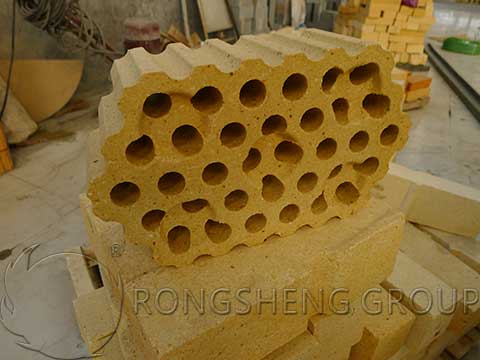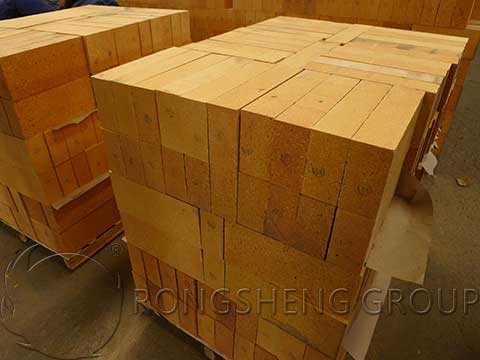What is the Difference with High Alumina Bricks?
As we all know, there are many types of high alumina bricks with different performances and wide applications. So, among the many types of high alumina bricks, I believe you will have the same doubts as me. With so many high alumina bricks, how are they different from ordinary high alumina bricks? As a refractory manufacturer, we have obtained a convincing answer through testing the original ratio of the product and the performance of the finished high alumina brick. And more and more high-performance high-alumina refractory brick products are used by customers, and the use effect is good. Rongsheng refractories manufacturers kindly remind that not good refractory bricks are suitable for all refractory linings. The choice of refractory lining material needs to be selected according to the specific operating conditions of the thermal furnace equipment. Only in this way can production costs be saved to the utmost extent and economic benefits can be improved. Next, let’s understand the difference between the following refractory bricks and high alumina bricks.
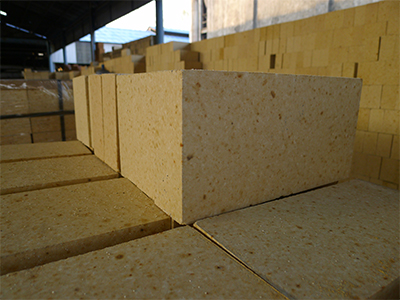
The difference between low porosity high alumina brick and high alumina brick
The biggest difference between low-porosity high-alumina bricks and high-alumina bricks is the low porosity.
Generally, high alumina bricks are divided into one, two, and three grades, and various grades of high alumina bricks are produced according to different indicators. The zirconium component is an anti-stripping high alumina brick, and the low porosity high alumina brick is a special high alumina brick with low porosity and good thermal shock. Generally, the pores of high alumina bricks are about 22-24%, and the pores of low-porosity Qiao alumina bricks are lower than 18%-19%. The reason for the slight difference in pores is mainly due to the small difference between machines with different pressures during high-pressure molding, but the thermal shock is the same.
Low-porosity high-alumina bricks and general high-alumina bricks also differ in firing time and humidity. Generally, the firing time of high alumina bricks is 60-70 minutes, while the firing time of low porosity high alumina bricks is more than 80 minutes. In this way, the load softening temperature of the two high alumina bricks is also different. Because low-porosity high-alumina bricks need to be added with specific matrix materials, the firing temperature is also higher than that of general high-alumina bricks, so the compressive strength is also different.
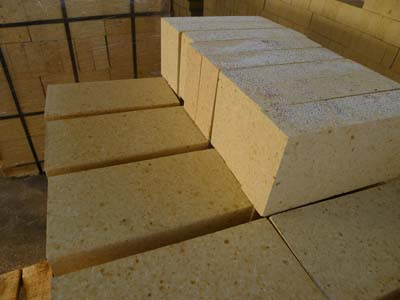
Generally, high alumina bricks have low-temperature requirements, and some waste high alumina bricks are added in a small proportion. So there is also a big difference in production costs.
Low-porosity high-alumina bricks are used in special kiln linings, and the corrosion of the atmosphere in the kiln also requires high-alumina bricks. Therefore, low-porosity and high-alumina bricks not only have low pores, wear resistance, and fatigue resistance, but also have good corrosion resistance. But the price will be relatively high compared with the general high alumina brick.
In short, there is a difference in the internal quality of general high alumina bricks and low porosity high alumina bricks. It can be used according to different situations.
What is the difference between andalusite mullite brick and andalusite high alumina brick?
Andalusite mullite bricks and andalusite high alumina bricks each have their own advantages. Although the main components of mullite brick and high alumina brick have alumina content, the crystal phase of the two is different.
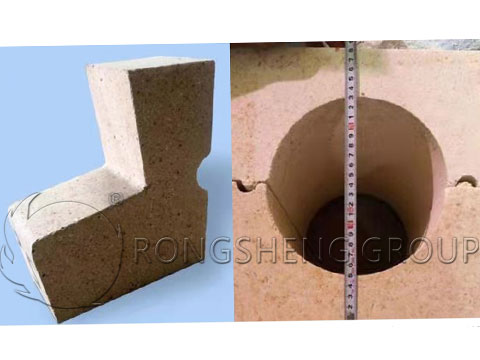
When andalusite is heated to 1300°C, it will become mullite, which has the characteristics of resistance to rapid cooling, strong impact resistance, and high load conversion point. During the conversion process of mullite itself, the thermal expansion is low and the crystal is relatively coarse. Andalusite does not need to be calcined and can be directly added to fired or unfired mullite bricks and high alumina bricks. Andalusite has the advantage of creep resistance. During use, impurities will cause the refractory bricks to soften prematurely and have a great influence on creep. Therefore, add a certain proportion of andalusite to mullite bricks or high alumina bricks. Make it resistant to high temperature and rapid cold and heat.
Andalusite high alumina bricks are made of andalusite as the main raw material, added with bauxite, formed by high pressure, dried, and fired at 1500℃. Andalusite high-alumina bricks are characterized by high-temperature resistance, the high softening temperature under load, low creep rate under high temperature, and unavailable volume, high-temperature volume stability, low thermal expansion coefficient during use, and low thermal conductivity. Andalusite has refractoriness of 1830℃ and chemical resistance. Adding andalusite to high-alumina refractory bricks can make the high-alumina bricks have abrasion resistance, higher load softening temperature, and better resistance to rapid cold and heat. The brick joints can be compacted at high temperatures, and the overall density of high alumina brick masonry can be improved, thereby improving the slag penetration resistance.
Andalusite mullite brick is a refractory brick made by adding different proportions of andalusite and mullite. This kind of brick has the advantages of good oxidation resistance, strong fire resistance, high compressive strength, low specific gravity, good peeling resistance, high flexural strength at high temperature, and long service life.
In short, andalusite mullite and andalusite high alumina bricks have similarities and differences. Andalusite mullite bricks are more expensive than andalusite high alumina bricks, and andalusite high alumina bricks are highly resistant to corrosion at high temperatures. Andalusite mullite bricks have good flexibility and stronger peel resistance.
High alumina refractory brick sales
Rongsheng high alumina refractory brick sales, Rongsheng is a refractory brick manufacturer with rich production and sales experience. Rongsheng’s refractory brick products have been sold to more than 60 countries around the world. The product quality is excellent, and the customer acceptance and recognition are high. The ability to support Rongsheng along the way is inseparable from the strength of the Rongsheng refractory factory. The Rongsheng refractory brick workshop is equipped with an advanced refractory brick production line. Various advanced equipment provides a reliable guarantee for high-quality refractory bricks. At the same time, Rongsheng manufacturers strictly control the quality of their products. The purpose is to provide customers with refractory brick products suitable for their production needs. To buy high-quality high-alumina bricks, please choose Rongsheng.
